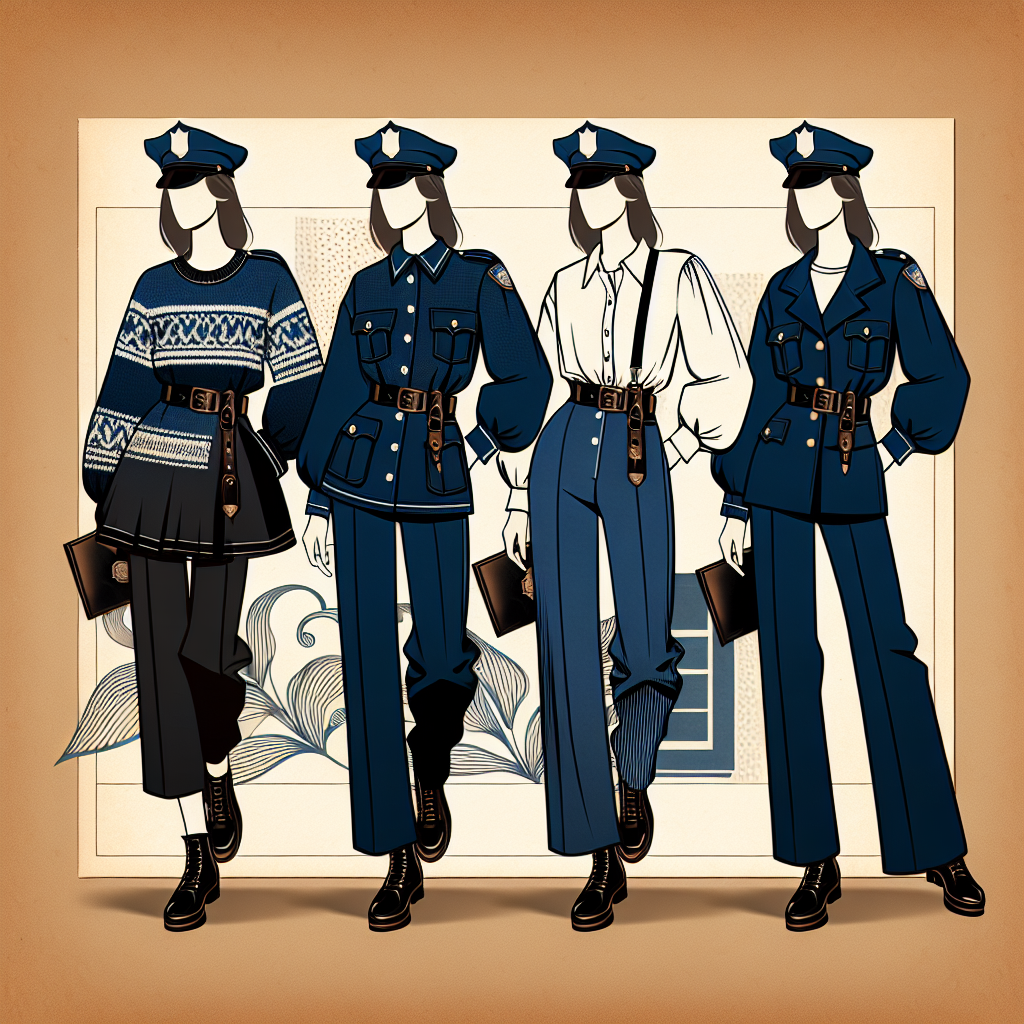Retro Police Chic: Exploring the Timeless Uniform Styles of Adam-12 (1968)
In the glamorous yet ever-changing panorama of fashion history, there emerges a fascinating yet unconventional trend: Retro Police Chic. Inspired by the American television series "Adam-12" that aired from 1968 to 1975, this fashion moment pays homage to the practical elegance and disciplined aesthetics of police uniforms. As we delve into this distinctive style, it becomes apparent that "Adam-12" not only contributed to pop culture but also influenced the shaping of uniform-inspired fashion trends that meld utility with sophistication.
Introduction to Retro Police Chic and its Fashion Significance
The "Adam-12" series offered an authentic glimpse into the daily routines of LAPD officers Pete Malloy and Jim Reed, played by Martin Milner and Kent McCord respectively. While it is primarily celebrated for its realistic portrayal of police work, the series also left an indelible mark on the fashion landscape by immortalizing the essence of mid-20th century police uniform style. Retro Police Chic represents a narrative wrought from structure, authority, and a visually straightforward yet compelling design language.
Uniforms have long held a special place in fashion history, often serving as an inspiration for designers seeking to encapsulate themes of order, resilience, and identity. Retro Police Chic extends beyond mere nostalgia; it intertwines cultural symbolism with fashion, emphasizing the interplay between form and function.
Main Themes and Styles of Retro Police Chic
The Retro Police Chic aesthetic is anchored in several persistent themes: practicality, minimalism, and authoritative elegance. The core styles that emerge from this trend are defined by their functional yet stylish elements: sturdy fabrics, clean lines, tailored fits, and subtle yet deliberate detailing.
-
Practicality: Police uniforms inherently prioritize practicality. The use of robust materials like wool blends and the incorporation of multi-pocketed designs ensure durability and functionality. This quality transfers fluidly into fashion, where designers seek to balance aesthetics with everyday wearability.
-
Minimalism: Retro Police Chic eschews unnecessary embellishments, favoring streamlined silhouettes and a restrained color palette dominated by greys, blacks, and navy blues. The absence of superfluous details only heightens the impact of the outfit’s structure and fit.
- Authoritative Elegance: The taut, clean lines and the palpable strength conveyed by police uniforms instill a sense of authority. When reinterpreted in fashion, this theme manifests in sharply tailored blazers, crisp shirts, and polished footwear.
Cultural Influences and Impact
Retro Police Chic burgeoned during a time of cultural upheaval and shifting societal values in the 1960s and 70s. The era was marked by the Civil Rights Movement, Vietnam War protests, and evolving gender dynamics, all of which flavored public perception of authority figures, including police officers.
The adherence to uniformity and structure within this style can be seen as a sartorial response to the surrounding chaos of the period. This paradox of order in a time of disorder captures the zeitgeist and reflects society’s collective yearning for stability and control.
Some prominent examples of uniform-inspired fashion that owe a debt to Retro Police Chic include:
- Yves Saint Laurent’s 1966 “Rive Gauche” collection: Pioneering ready-to-wear fashion, Saint Laurent introduced military-style jackets and tailored pants that mirrored the disciplined aesthetics of police uniforms.
- Calvin Klein’s 1990s collections: Renowned for his minimalist approach, Klein’s work often drew upon the clean lines and structural integrity of uniform styles, translating them into modern, streamlined apparel.
- Hedi Slimane for Saint Laurent: Reviving the essence of uniform chic with his slender silhouettes, Slimane’s designs from the 2010s echo the neat, no-nonsense appeal of mid-century police attire.
Fashion Reflecting Cultural, Social, and Historical Contexts
Fashion often acts as a barometer for cultural sentiments. The consistent resurgence of uniform styles, including Retro Police Chic, speaks to an enduring fascination with symbols of authority and protection. Within the broader fashion narrative, this trend can be understood as a counterpoint to moments of societal distress or transformation.
During the "Adam-12" era, the professional image of police officers on television subtly influenced public perceptions and, by extension, fashion choices. Through the lens of costume design, the show cemented a visual archetype of the American police officer – methodical, composed, and capable.
Legacy and Lasting Influence
The enduring legacy of Retro Police Chic lies in its unwavering appeal in both high fashion and everyday wear. The robust functionality and timeless elegance it encapsulates continue to inspire contemporary designers and fashion enthusiasts alike. Collections that draw upon utilitarian themes often find their roots in this archetype, proving the adaptability and relevance of the style.
Reflective Questions and Takeaways
As we contemplate the significance and influence of Retro Police Chic, several reflective questions surface:
- How does the enduring appeal of uniform styles underscore our relationship with authority and order?
- In what ways can fashion inspired by "Adam-12" offer modern consumers both style and practical utility?
- How might future designers reinterpret the Retro Police Chic aesthetic to address contemporary societal issues and fashion needs?
By examining the Retro Police Chic trend, we glimpse the sophisticated yet utilitarian allure that arises when fashion draws inspiration from structured, authoritative sources. This interplay between function and form remains a testament to the inherent adaptability of fashion and its capacity to weave historical and cultural narratives into every stitch and seam. As we move forward, the lessons imbued by such trends continue to offer valuable insights into the ever-evolving fabric of fashion history.
Got more questions? Our personalized Fashion Explorer AI assistant is here to help. Click here to start a conversation!
[Advertisement]
Wondering how fashion reflects deeper values? Discover how ANY trend or style relates to positive biblical principles with Fashion and Scripture GPT from BGodInspired.com. Click here to see fashion in a new light!
[Advertisement]

